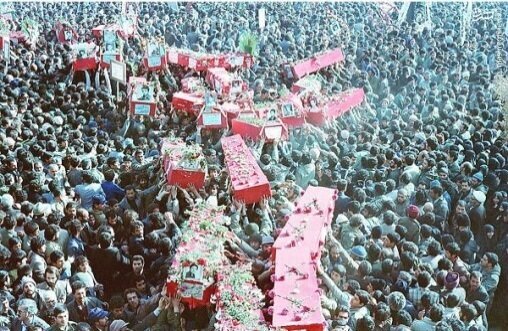Isfahan’s enduring day of valor

Within the rich historical tapestry of Isfahan, renowned for the architectural splendor of its bridges and the exquisite tilework of its mosques, one day holds a distinct and somber prominence.
It is a date absent from guidebooks yet permanently engraved in the consciousness of every Isfahani. The 16th of November, 1982, corresponding to the 25th of Aban, 1361 in the Iranian calendar, was the day the city of Isfahan conducted a mass funeral for 370 of its sons.
This day was officially designated as “The Day of the Epic and Sacrifice of the People of Isfahan,” a title that encapsulates not a mere event, but a profound demonstration of communal fortitude, faith, and resilience.
To comprehend the magnitude of this occasion, one must contextualize it within a period of brutal, externally imposed conflict.
In September 1980, the neighboring regime of Saddam Hussein in Iraq initiated a full-scale invasion of Iran. This unprovoked war, which would persist for eight protracted years, subjected the nation to aerial bombardments, territorial violations, and a summons for an entire generation to defend its sovereignty.
The individuals honored on that pivotal day had fallen during a critical military engagement designated as Operation Moharram. Commencing on the 1st of November, 1982, in the challenging terrain of western Ilam province, this ten-day offensive constituted a fierce and costly chapter in the nation’s defense.
The strategic significance of the region was so considerable that Saddam Hussein himself was reportedly present to command his units, which deployed their utmost military capacity to obstruct the advance of Iranian forces.
Operation Moharram ultimately resulted in the martyrdom of 1,250 Iranian combatants. Among these, a staggering 750 were from the province of Isfahan, a figure underscoring the disproportionate contribution of its people to the war effort.
On Tuesday, the 16th of November, 1982, the customary rhythm of Isfahan ground to a halt. Schools, government institutions, factories, and the labyrinthine bazaar closed their doors.
The city’s grand central square, Naqsh-e Jahan (Imam Square), and its adjacent arteries transformed into a vast confluence of humanity. The atmosphere, typically vibrant with commerce, was thick with collective sorrow.
In a display of profound grief and breathtaking solemnity, senior clerics and a massive assembly of citizens congregated to perform a majestic prayer service over the pure remains of the 370 martyrs.
The flag-draped coffins were not perceived as emblems of defeat, but rather as vessels of sacred sacrifice. Subsequently, a communiqué from the Islamic Republic’s founder, Imam Khomeini (RA), was recited before the multitude, merging deep religious conviction with unwavering patriotic resolve.
This was not an insular, private ceremony of grief. It was a public, collective embrace of both profound loss and unwavering purpose. The citizens of Isfahan confronted their anguish directly; they assembled to receive the heroes of their nation, to bestow a final kiss upon what they felt were fragments of their own hearts before committing them to the divine.
The city wept unceasingly, but its lamentations were not of hopelessness. They were the tears of a populace that comprehended the grave cost of sovereignty and possessed the determination to bear it.
The simultaneous interment of 370 of its young men had the potential to cripple the spirit of any metropolis. Yet for Isfahan, it functioned as a catalyst for an even more formidable determination.
The stately funeral proceedings did not instill doubt or fragility into the populace’s iron will. On the contrary, it reinforced their commitment to defend their land, their beliefs, and their revolutionary ideals.
Analysts regard this day as a pivotal juncture in the narrative of the Islamic Revolution—a day of immense pride for a people possessing a “mettle akin to steel.”
In a powerful manifestation of this spirit, even as they interred one cohort of heroes, the people of Isfahan dispatched thousands more of their courageous youth to the battlefronts.
This simultaneous act of mourning and reinforcement crafted what the Leader of the Islamic Revolution, Ayatollah Seyyed Ali Khamenei, later termed as an “eminent paradigm of sacrifice and honor.”

The legacy of that day is permanently inscribed in the national memory. Imam Khomeini himself, in a historic address, expressed awe at the city’s endurance: “Where in the world can one locate a counterpart to Isfahan, which merely days prior conducted funeral rites for 370 of its martyrs? This very nation, having presented such offerings, persists in its service to Islam.”
The war’s statistics offer a stark testimony to Isfahan’s sacrifice. From the approximately 200,000 Iranians who perished in the imposed conflict, a remarkable 23,000 originated from Isfahan province.
The 370 martyrs of the 25th of Aban constituted a single, devastating contingent from this vast total.
Thus, the “Day of the Epic and Sacrifice of the People of Isfahan” transcends a mere historical reference. It is a living chronicle.
Reported by Tohid Mahmoudpour
source: en.mehrnews.com





